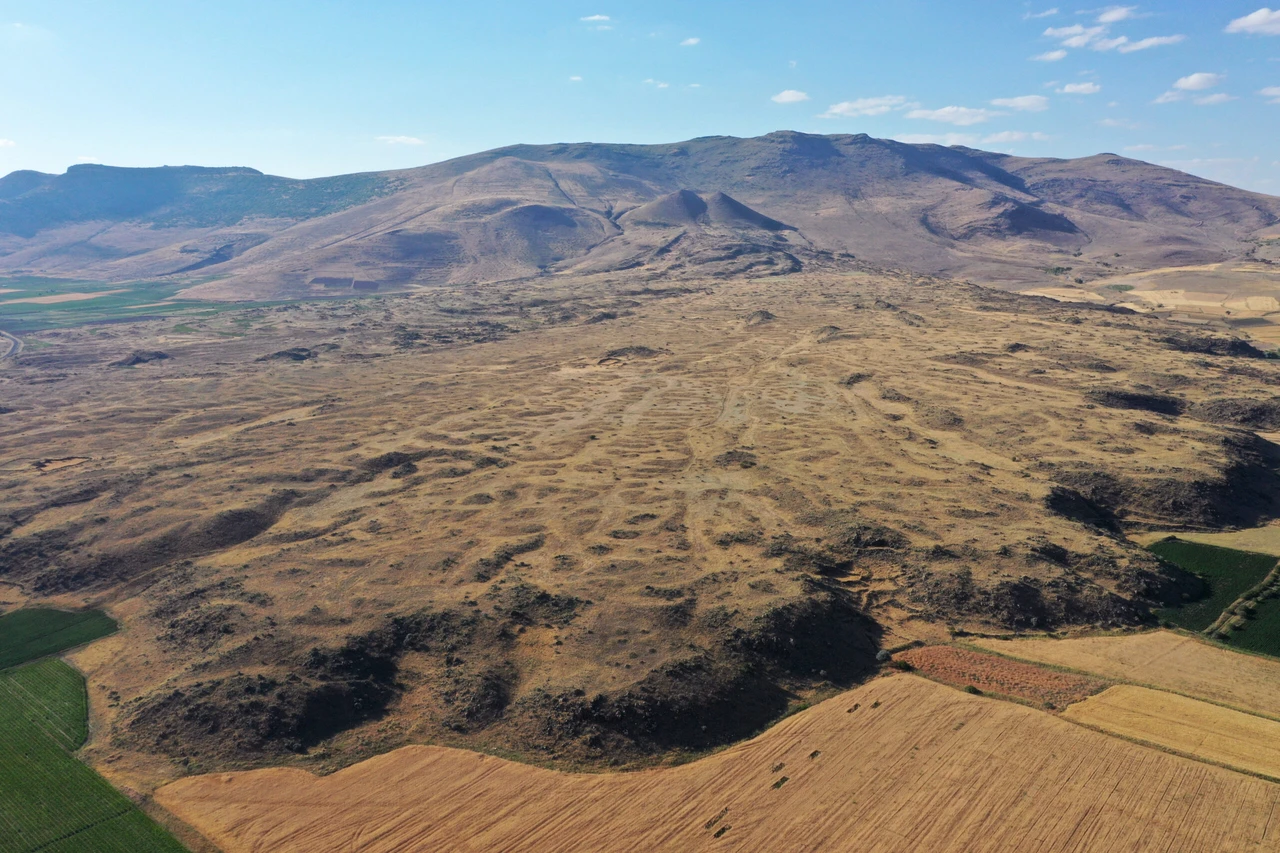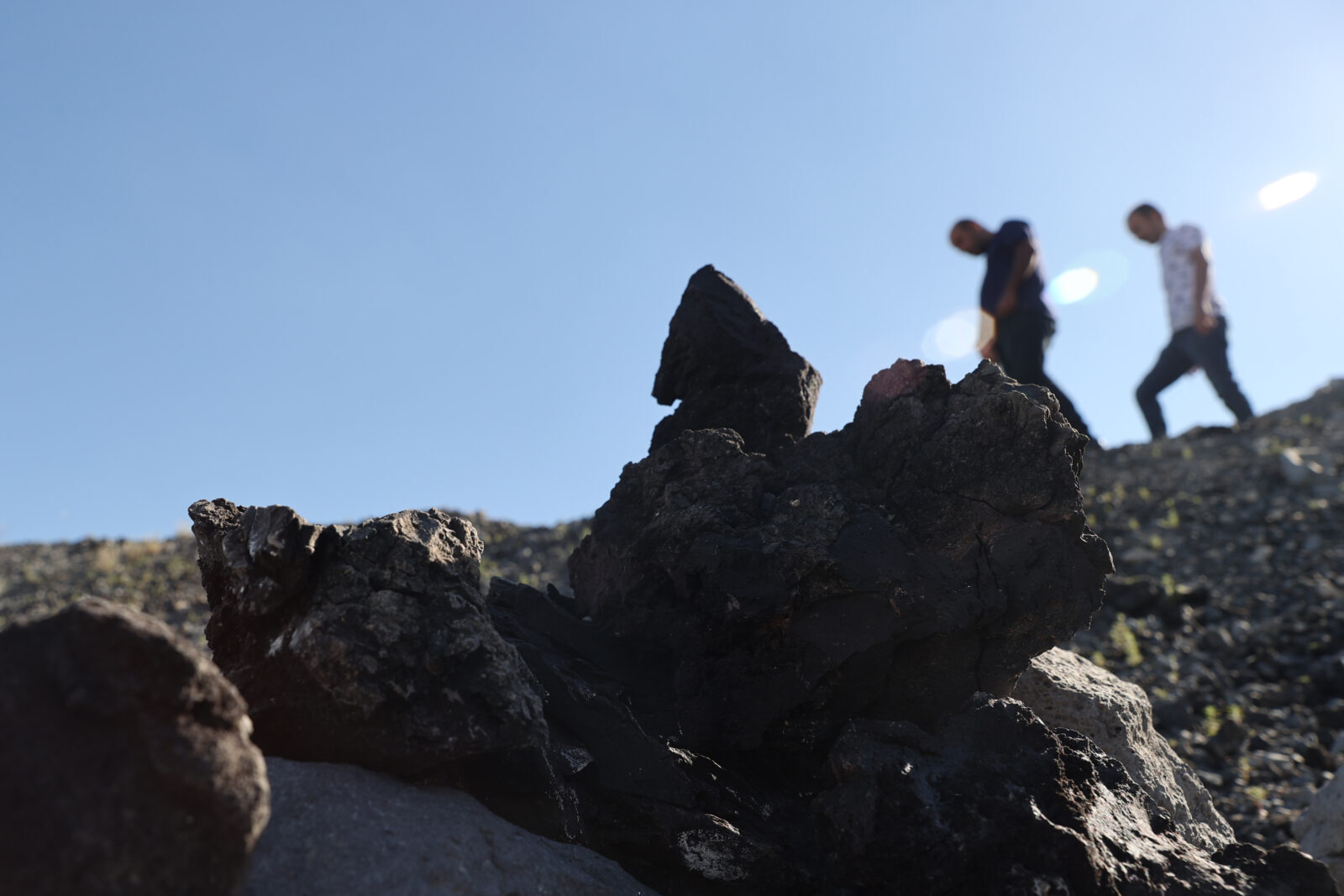Discovering hidden volcanoes: 19 calderas identified in Cappadocia
 Surveys in Cappadocia, one of Türkiye's major tourism centers, revealed 19 calderas (volcanic landforms), Nevsehir, Türkiye, July 9, 2024 (Photo by AA Photo)
Surveys in Cappadocia, one of Türkiye's major tourism centers, revealed 19 calderas (volcanic landforms), Nevsehir, Türkiye, July 9, 2024 (Photo by AA Photo)
Nevsehir Haci Bektas Veli University researchers have identified 19 calderas in Cappadocia, revealing new insights into the region’s volcanic history.
In a groundbreaking study, the Cappadocia Geological Heritage and Rock Carving Structures Application and Research Center, led by professor Mutluhan Akin, has identified 19 calderas (volcanic landforms) across various locations in Nevsehir. These findings highlight the volcanic origins of the region, which is renowned for its unique geological features and historical significance.
Akin, vice-rector of Nevsehir Haci Bektas Veli University and director of the Cappadocia Geological Heritage and Rock Carving Structures Application and Research Center, shared insights with Anadolu Agency.

He explained that distinct lava flows and volcanic peaks are clearly visible in Nevsehir, alongside calderas formed by volcanic eruptions. “We have identified 19 calderas in our research, although there may be more that have lost their distinctiveness over time,” Akın noted.
Akin emphasized that examining fairy chimneys, natural rocks, and volcanic vents revealed that these formations are of similar ages. The region has long attracted both domestic and international scientists who have conducted extensive studies on its geological layers and rock formations, resulting in numerous published articles that shed light on Cappadocia’s ancient past.
Integrating calderas into tourism
Highlighting the importance of informing tourists about Cappadocia’s formation, Akin stated, “The volcanic vents are evidence of Cappadocia’s origins, and integrating these calderas into tourist itineraries would be beneficial.”
He pointed out that the university, recognized by the Council of Higher Education (YOK) as a specialized institution in “Natural and Cultural Heritage Tourism” since 2021, is committed to promoting the geological and cultural significance of the region.
Akin clarified misconceptions about Cappadocia’s volcanic origins, asserting that the region is not the product of Erciyes, Hasan Mountain, and Melendiz but of its own volcanic activity. The rocks in Cappadocia are composed of pyroclastic materials from ancient volcanic activity, distinct from typical lava flows.
These volcanic materials, deposited as rocks and ash, have lithified under pressure to form the region’s iconic soft rocks.

Technological advances reveal new data
Technological advancements have facilitated the acquisition of new data. “The ignimbrites containing the fairy chimneys in Cappadocia date back 5 to 9 million years. In contrast, Erciyes, Hasan Mountain, and Melendiz are much younger, around 1.5-2 million years old. It is clear that the volcanic rocks in Cappadocia originated from its own volcanic vents,” Akin explained.
He identified volcanic vents in western and southern Nevsehir, particularly in areas like Derinkuyu, Acigol, and Cardak, where volcanic rocks and ash emerged from calderas 5million to 9 million years ago, forming Cappadocia’s distinctive landscape.
Ozan Onur, president of the Nevsehir Tourist Guides Association (NERO), emphasized the importance of informing professional tourist guides about the region’s volcanic peaks and calderas. He expressed plans to organize special tours for the upcoming tourism season, catering to tourists curious about Cappadocia’s formation.
Suvermez village resident Huseyin Ozdemir, delighted to host tourists eager to see volcanic remnants, said, “We always thought these were lava flows, and our beliefs were confirmed through research. Opening these areas to tourism would greatly benefit our region.”
Attila Cataltepe, a teacher in Acigol, echoed the sentiment, noting the area’s significant impact on the region’s formation. “Promoting these calderas in tourism and educational materials will greatly enhance the region’s recognition and development,” he added.



